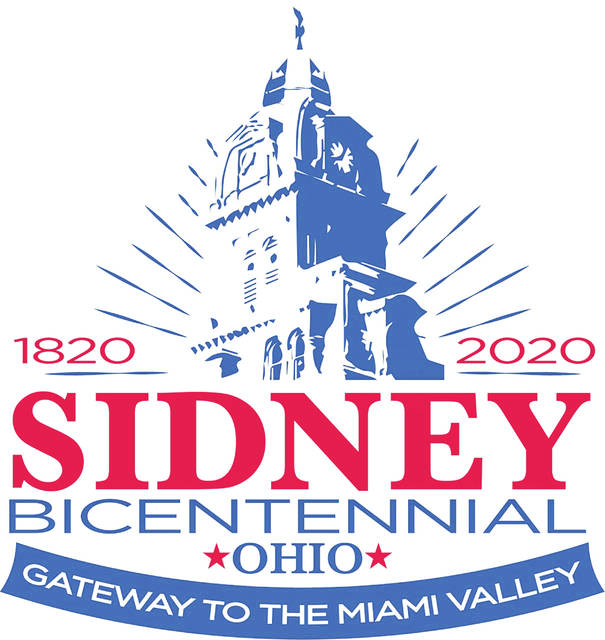
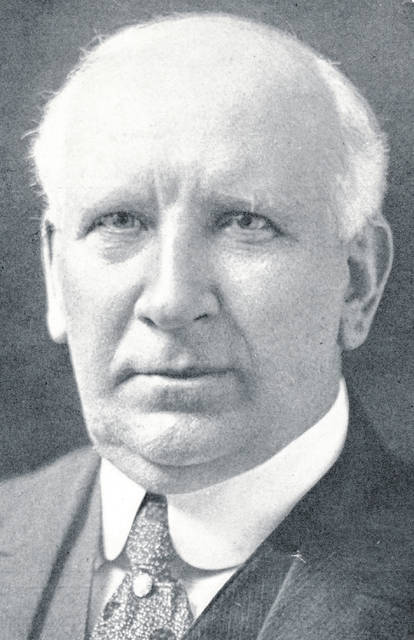
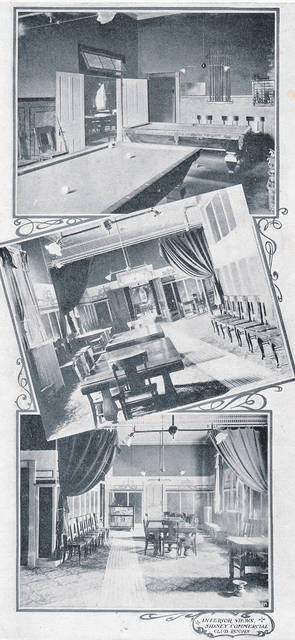
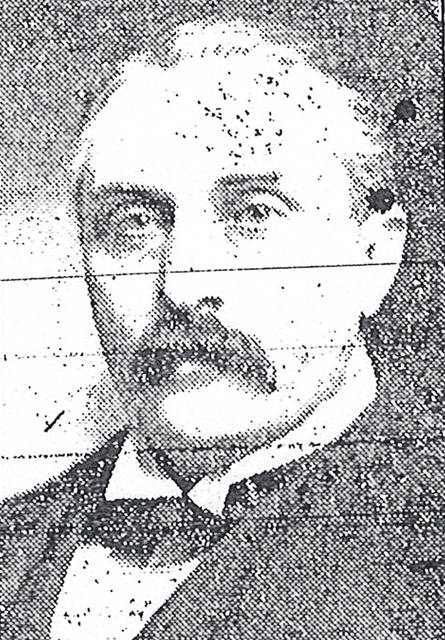
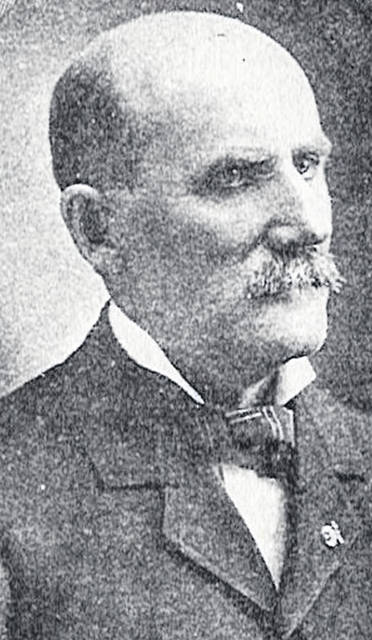
Editor’s note: in conjunction with the 200th celebration of the establishment of Sidney, the Sidney Daily News will be publishing a year long series about the city’s history.
SIDNEY — While the village of Sidney struggled through its opening years from 1820 to become a city with business and industry, its fortunes were made much brighter by being blessed with leaders whose foresight for progress made the struggle much easier. The plan laid out on the Charles Starrett- donated land provided for extra wide streets around a court square that was large enough to later support the building of the magnificent 1883 Shelby County Courthouse, which is the crown jewel of downtown Sidney. But the heart of the plan was for the accommodation of businesses that would make Sidney a bustling and prosperous place to live. It was no accident that brought Sidney to such later acclaim as All-America City in 1964,and even today to be noted as having the most manufacturing jobs per capita of any city in Ohio.
So where did all this begin? It began with an organization known as the Commercial Club on February 26, 1903. This was a group of leading businessmen, manufacturers and citizens of Sidney, whose names read like the Who’s Who of movers and shakers of the community. It was organized for the sole purpose of “promoting the best interests of Sidney, Ohio,” and this very broad objective was broken down into committees and subcommittees. The organizational and entrepreneurial minds of men like L. M. Studevant (founder of First National Bank), Judge H.T. Withers, I. H. Thedieck (founder of Monarch Machine Tool and the Thedieck Department stores), James Anderson, B.M. Donaldson, Dr. H. E. Beebe, S. I Wicoff,William Haslup (founder of Sidney Steel Scraper) , E.S. Maxwell, Charles Given, John F. Given, Judge J.D. Barnes, William Piper, W.E. Kilborn, W.H.CGoode, W.H. Wagner, B.P. Wagner, E.J. Griffis, J.B. Tucker, and C.R. Benjamin became the driving force for advancement of Sidney. These were only a few of the over one hundred men who determined that to make Sidney an industrial and business hub of the state, their action was necessary.
At a meeting of the Manufacturers’ Association in 1903 for the purpose of “taking some action in reference to an electric railway leading to Sidney,” they determined that another organization with broader appeal was needed, and the one that grew from that notionwas the Commercial Club. The subscription roll signed by almost all in attendance that night quickly gained support as it became obvious to the community that this group was formed to look out for the welfare of Sidney and its citizens, not solely for personal gain on the part of its founders. These men literally bought into the expansion of Sidney’s industry by committing their own funds that night and selling other subscriptions soon after.
These were men of action. Within six days of determining the need for the club, its organizers had heard reports from several of the committeesestablished to solicit more members, secure meeting quarters,and create a constitution and bylaws. Eighty-eight people had “signified their intention of joining the organization, and it was decided to incorporate with a capital stock of $5000, divided into 200 shares of $25 each. “ Under I.H. Thedieck, the first president of the Commercial Club, progress moved swiftly. Within 3 more meetings, the rooms on the second floor of the Harry G. Wagner post office building were rented for a 5-year lease.After securing and handsomely furnishing rooms taking up the entire second floor, the Commercial Club founders, who were accustomed to upscale surroundings, deemed the necessity of a “reception room finished in old rose and solid mahogany furniture with an adjoining room to the north as the ladies’ parlor, finished in green with willow furniture, white and gold. Just beyond the entrance to the left is the dining room, finished in red; to the right of this is the Japanese room in light brown, and beyond this is the library in dark brown. These rooms are all furnished with mission furniture. At the south end of the dining room is located the pantry and kitchen. The billiard room is located at the left of the south end of the dining room. All in all, the rooms are admirably arranged for the use of the club members and for the entertainment of visitors. James L. Beisch is the accommodating steward of the club.” Fifteen different committees eagerly began the real business of the club “to promote the best interests of Sidney.” Here insert pictures of the CC rooms
The first years saw many industries and businesses brought to Sidney by these men, who actively and personally recruitednew businesses, two of which were the Sidney Tool Company and the Copeland Corporation. The club not only created a climate to attract and foster businesses, the members carefully investigated prospective companies and ,alongwith the Board of Improvement, arranged for attractive financing packages. However, the range of these men’s civic vision was not just limited to industry. Indeed, they were involved in the proper care of the courthouse grounds, in charge of the downtown Memorial Day parades and ceremonies, the creation of a special celebration for the returning WWI veterans, scheduling literary and debate events, demanding and then supervising the railroad improvements in town by the Big Four and the C.H and D lines. The Commercial Club members even saw that the returning WWI veterans were given the jobs which they had left behind when they answered the call of duty.
As Rich Wallace wrote in his Voices from the Past :”It seemed no detail was too small to escape the ambit of the club’s actions. When the topic of whether the Poplar Street bridge over the canal should be sixty-three or ninety-nine feet wide, a City Council meeting held in March 1907 witnessed the input of I. H. Thedieck, W.H. Wagner, C.F. Hickock, president of the Hickock Candy Company and Civil War hero Capt. E.E. Nutt. The wider bridge was built.”
The Commercial Club’s twenty-five various committees show the impact of this club on the development and welfare of the city and its citizens. For example,the Committee on County Roads, first chaired by B. T. Bulle, concerned itself with the uniform grading of the county and city roads and the paving of the city streets; the Committee of New Ideas, first chaired by W.K. Sterline (builder of the present Murphy’s Craft Bar building), made sure the Monumental Building had a proper flag, the Committee of Public Safety, headed by J.W. Costolo, worked on fire protection for the hills surrounding Sidney; theCommittee on Shade Trees and Civic Improvements, once headed by Prof. E. McVay, sold trees to people at wholesale prices and then arranged for school children each year to plant hundreds of shade trees; the Workman’s Home Committee, once chaired by L.M. Studevant, saw the need for 300 new houses in 1916 to rectify the labor shortage created by so many new industries coming to the area. Men could not move to Sidney to work if they could not find a place to live. The Commercial Club organized a subscription of $200,000 to be paid in 10% installments by the subscribers as needed to take care of the building of the houses.
Helping existing businesses survive was also a concern of the Commercial Club. This was evidenced when the Given Tannery went into receivership in 1917. Three Commercial Club members, Judge J.D.Barnes, A.J. Hess, and C.F. Hickock, organized a community effort forming a new company to take over the tannery. Encouraging citizens to invest by buying stock, these men were able to save the company and the jobs of the many men it employed.
The health and welfare of the community was further demonstrated when in 1917,the Commercial Club actually funded the hiring of a community nurse, whose job was to show people how to care for themselves to keep from becoming ill. During WWI, the club’s concern for the high cost of living resulted in their funding distribution of free seed for families to grow their own food.
It is interesting to note that each year with the election of new officers, different leading businessmen in the community stepped forward to assume a year-long responsibility to lead the club in its efforts to promote Sidney. Even after their terms of office expired, these men continued to head committees and assume responsibilities, all while continuing to run their own businesses.
In time, other organizations would assume some of the responsibilities these early businessmen had shouldered, but no one organization would ever have the impact or energy exercised by these founding city fathers, who cared as much for the success of others and their community as they did for their own. We owe them a debt of gratitude.






